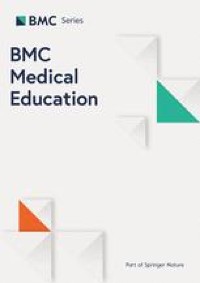Assessing predictors of students’ academic performance in Ethiopian new medical schools: a concurrent mixed-method study | BMC Medical Education

Study design
A concurrent mixed method design was employed; an institution based survey with additional explorative interviews. A survey was used to gather information from a larger group of participants. Interviews were used to gain more insight in how different factors may influence Academic Performance.
Study context
There are 13 medical schools in Ethiopia with the NMEI track and all the schools are graduate-entry programs. Applicants with a first degree are considered for admission to NMEI schools. Students are enrolled from various health and natural science backgrounds. They need to pass the entry exam. Many students have prior work experiences with paid salary and some of them also have their own family. In NMEI schools the study duration is four and half years. Students study the normal and abnormal function and structure of human body for the first two years, followed by two clinical years and the final half a year is block internship time.
The main feature of NMEI program is integrating basic sciences to clinical skills complemented by early clinical attachment and frequent community exposure, the use of PBL and professional competency development (PCD) all of which need active engagement of the students. The curriculum utilizes a modular system and provides horizontal and vertical integration of basic and clinical subjects. During the first two years of study, students focus on PBL, PCD and community attachment sessions; assisted by lectures, skills training, basic science laboratory and clinical attachments. Social and population health courses are longitudinally given throughout the students’ study.
Participants
All students of medical schools with the new PBL-based curriculum in Ethiopia were the source population. Of the 13 NMIE schools in the country, four schools (30%) were selected randomly by lottery method. More than 890 students are enrolled in the schools. The selected schools were Adama Hospital medical college, Axum University medical school, Yekatit-12 Hospital medical college and Debre-Markos University medical school. From selected schools, all students whose CGPA was available were included in the study. Internship students may be challenged to answer the questionnaire and to remember their preclinical situation retrospectively. In addition, they are assigned to different hospitals which made it difficult to access them for data collection. Therefore, they were excluded from the study. There were a total of 397 students in the selected schools but those who met the inclusion criteria were 312. For the qualitative part, a face to face in-depth interview was conducted with 15 key informants.
Instruments
A structured self-administered questionnaire prepared in English was distributed among the students. The questionnaire has been developed from relevant literature including measurement for the stress by a standardized tool called Medical Student Stressor Questionnaire (MSSQ) [28, 29].
The questionnaire has 49 items and consists of;
-
▪ Basic items used to collect socio-demographic characteristics of the participants with 6 multiple choice items and 4 open questions.
-
▪ The MSSQ has 34 items on a 5-point Likert–scale, including the following scales; Academic related stressors (13 items), Intra & interpersonal related stressors (7 items), Teaching and Learning stressors (7 items), Social related stressors (3 items), and Group activities related stressors (4 items).
-
▪ Five items to investigate factors related to prior education (one multiple choice item about prior educational degree and 4 open items about performance in previous degrees and exams).
The MSSQ is a standard and validated questionnaire but the other items were added by the researchers and customized to the educational system in Ethiopia. To ensure data quality, the questionnaire was pilot tested in Wollo University medical school (a school not included in this study) among 23 students. After the pilot test, some editorial improvements were done to increase clarity to the participants. For reliability of the tool a Cronbach’s alpha of 70% was recorded. As to the qualitative part, we designed four semi structured questions focused to identify the challenges students often face in the curriculum, the prominent factors affecting students’ performances and reasoning out why. Finally, participants’ recommendations on how to improve performances in the program were forwarded. During the explorative interviews, common causes of poor performance and the impact of different factors were explored. Interview was done in local language (Amharic) to ensure rich explanation; it was continued until saturation by probing. Training was provided to the interviewers.
There are two possibilities to measure the students’ academic performances; the qualification exams and the cumulative grade point average (CGPA). Qualification exam consists of 60% from the CGPA and 40% end year exam; it is a pass (≥ 60%) and fail (< 60%) assessment and it is provided at the end of second year. CGPA shows the averaged grade point for all the modules covered in the course of two years. Letter grades are given based on points earned out of 100 for each module. It has a fixed scale and linked to the curriculum. The letter grades and points scored out of 100 are listed here; (A: ≥ 85, B+: 80–84.99, B: 70–79.99, C+: 65–69.99, C: 60–64.99, D: 50–59.99 and F: < 50 respectively for excellent, very good, good, satisfactory, fair, below pass mark and failed performers).
Qualifying exams are not appropriate to measure the AP for two important reasons; first, the CGPA accounts 60% of the qualification assessment score and only 40% is calculated from the end year exam. Second qualifying assessments are given only for some randomly selected modules (commonly 6 modules out of eleven) of the two years’ study. Using it for measuring AP is just double consideration of the CGPA (at least the 60%) as an outcome variable; this causes statistical fallacy. CGPA is the average of the two years’ performance (for all the modules) which provides relatively valid assessment results of the students. It allows richer information about the students’ performance. Hence, CGPA indicates the actual students’ academic performance better than qualification exams where it was converted into 100 points.
Procedure
Data collection was done among medical students who completed their preclinical years from December 2018 to January 2019. It was done in the classrooms of the respective schools. Five teachers were recruited and oriented about the data collection technique and research purpose. Participants were first oriented about the objective of the study, contents of the questionnaire and its organization. Then, the questionnaire was distributed among the students on paper and filled in immediately. To explore the factors affecting the students’ academic achievement, a face to face in-depth interview was conducted withg 15 key informants who were selected purposefully (6 students and 9 teachers). Interviews lasted for a maximum of 26 min. Two experienced and trained interviewers took audio records and written notes during the interview time. Data collection continued until saturation.
Data analysis
Collected data was reviewed and checked for completeness and twenty incomplete questionnaires were discarded. Collected data was entered into Epi-info version 7.0 software package and analysis was performed using SPSS version 22. For reporting descriptive statistics were collected and presented in tables, graphs and text. The statistical analysis was made at 95% confidence interval. ANOVA was tested to compute the model significance and it was found to be a good fit (F-test = 6.56 at significance level of P < 0.001). The statistical model can explain 71% of the variation (R squared value = 0.71 with P-value < 0.001). The relationship of dependent and independent variables was determined by employing multiple linear regression analysis after checking for assumptions like normal distribution, independence of individual observations and linear relationship of the Academic Performance (AP) with each independent variable. The multi-collinearity was checked by using tolerance and variable inflation factor (VIF) tests and a P-value less than 0.05 was used to check statistical significance. In the qualitative part, an experienced and qualified transcriber was employed. The recordings and written notes were transcribed and after repeated reading they were coded manually into themes, using an inductive approach. Quotes are presented with the quantitative findings, where relevant.













